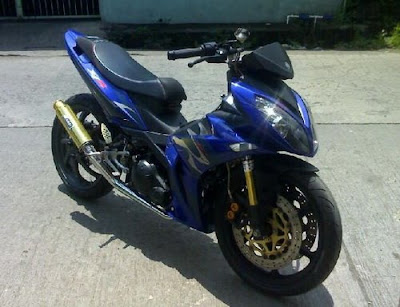This video is about a convoi which gathers only Yamaha RX-Z on the trip to Mersing Johor. I was amazed by how long the parked RX-Z lined up for the show.
Watch the video and see what I meant!
This video is about a convoi which gathers only Yamaha RX-Z on the trip to Mersing Johor. I was amazed by how long the parked RX-Z lined up for the show.
Watch the video and see what I meant!
“Sprocket Materials
Most standard sprockets are manufactured from steel. They can be made from many type of material, but the offerings from most manufacturers are based upon their own equipment limitations and the tooling available to cut the teeth.
Below is a listing of typical sprocket materials and their most frequent application environments.
Steel – Is considered the most typical construction material. It is available in different hardness levels (covered later) and is used in all types of applications.
Bronze – Is a metal used in non-magnetic applications where ‘no sparking’ is required. It can also withstand the abuse of some corrosive environments.
Brass – Is also a non-magnetic application material with the ability to stand up in a number of corrosive environments.
Stainless Steel – This is the most common material used for corrosive environments. It is widely applied throughout in the food processing industry and most manufacturers have types approved for direct food contact.
Titanium – Light weight and very strong, this metal is a silvery, dark grey colour and is designed for highly corrosive applications or direct chemical exposure such as in the electrical industry where printed circuit boards are cleaned.
Aluminium – Silvery, light weight metal that can resist corrosion but is restricted to light duty, light load applications. Typically used in belt and pulley applications (timing belts).
Nylon (Plastic) – As with roller chain, nylon is also used for anti-corrosive environments, as well as for quietness.
Nylon materials are also generally less expensive than metal. Nylon sprockets can be used in the food industry, as they hold up well in wash down situations. These plastic sprockets can be constructed from electro-conductive through heat resistant styles – similarly found in plastic chain.”
What is the sprocket that you are using now? Let’s share the knowledge!
 Yamaha Spark 135 Extreme Modification
Yamaha Spark 135 Extreme Modification
 Yamaha Spark 135 – Indonesia Modification
Yamaha Spark 135 – Indonesia Modification


Yamaha Jupiter Z or Yamaha Lagenda in Malaysia
 Yamaha X1R Rear Lamp
Yamaha X1R Rear Lamp
© Hak Cipta – BikesRepublic.com 2024. Trademark adalah hak milik pemilik sepenuhnya. Semua hak terpelihara.